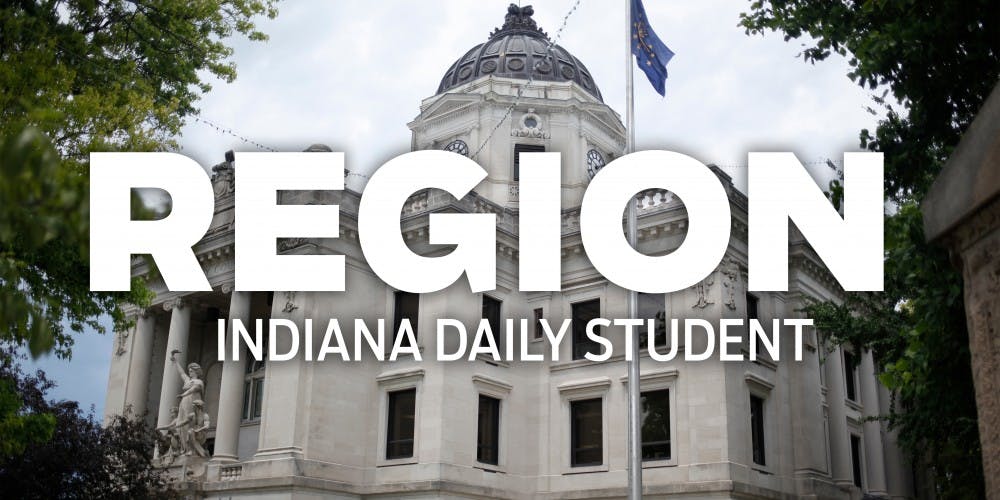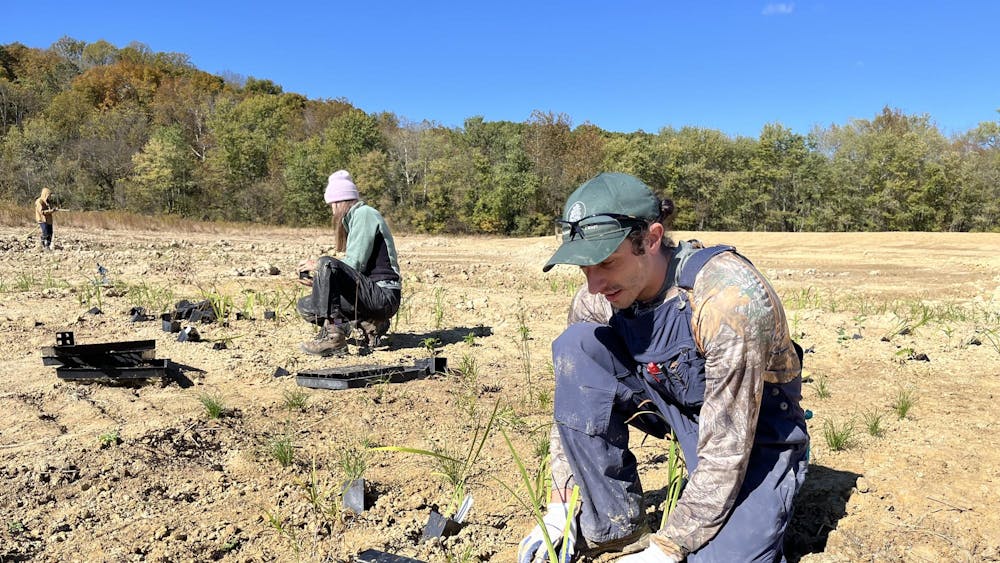In the first winters after Jeff Padgett bought his family’s farm 36 years ago, he saw snow cover the fields regularly. Back then, when they raised buildings, conventional wisdom dictated they drive posts at least 24 inches into the ground to protect them from frosts.
But the last three years or so, winters have been much milder at Padgett’s Family Farm in Springville, Indiana, he said. Those frosts haven’t gone nearly 24 inches into the dirt — more like two or three.
“I feel like it’s obviously warming,” Padgett said.
Though he was hesitant to speak for the world outside his farm, Padgett’s feeling is one backed by a wealth of science and shared with the last presidential administration.
It isn’t one shared, though, by President Trump, who has repeatedly called climate change a “hoax” and who Tuesday signed an executive order to roll back efforts made by former President Barack Obama to slow global warming. Trump directed the Environmental Protection Agency to remove and rewrite Obama’s Clean Power Plan, which sought to reduce greenhouse gas emissions by closing hundreds of coal-powered electric plants, regulating carbon dioxide emissions from remaining ones, and building solar and wind energy plants.
David Konisky, an associate professor in the School of Public and Environmental affairs, said the order marks the beginning of the possibly years-long process to replace it with a new plan, but that it carries a symbolic weight.
“It sends a strong signal that this administration not only wants to get rid of the Clean Power Plan, but that whatever plan they come up with to replace it will be much more moderate in scope,” said Konisky, who specializes in environmental politics and policy.
Some policy ebb and flow is expected in transitions to new administrations, and that’s particularly true in the EPA, Konisky said, which has long shifted on issues like climate change.
Still, he said, Trump’s new order seems far more aggressive than a typical shift — it’s a full reversal of the last administration’s efforts, one that seems to go against the EPA’s nominal mission.
“They’re not trying to operate within the margins,” he said. “They’re trying to take the country in a new direction.”
If the order does signal a sea change, environmental advocates in southern Indiana fear the repercussions of ignoring climate change.
Marcia Veldman, the state coordinator for the Citizens’ Climate Lobby and manager of the Bloomington Community Farmers’ Market, said she worries about the continual effects of unchecked climate change on Indiana’s agriculture if it continues as projected.
She’s already seen some damage by weather ascribed to climate change, she said. In 2007, a warm March followed by a cold April devastated the state’s fruit crops. In 2012, a serious drought damaged crops in southern Indiana.
Just last month, abnormally warm daytime temperatures followed by lows in the teens hurt some farms, particularly orchards, she said.
“If the projections are left unchecked, we won’t be able to grow corn in Indiana by the end of the century,” said Veldman, echoing reports that Midwestern crops could see a massive decline — with numbers reported between 22 and 80 percent — by the end of the century.
Stephanie Kimball, of the local environmental advocacy group Earth Care, noted in an email that coal-based plants in Indiana may now stay open longer, “putting more Hoosiers’ health at risk.”
Pollutants from coal plants, which include mercury and nitrogen can cause cancer, asthma and cardiovascular disease, among other ailments, according to a 2009 report from Physicians for Social Responsibility.
Coal has been the axle on which much of Trump’s climate discourse has turned. In particular, he’s vowed to rejuvenate the coal industry.
As he signed the order Tuesday, industry workers stood at his side.
“You know what this says?” he asked them, according to a New York Times report. “You’re going back to work.”
Loosening restrictions isn’t an automatic ticket to reviving a declining industry, especially if companies continue to invest in energy sources other than coal, Konisky said.
Other forms of energy have become cheaper to invest in, he said, and some states were already making efforts to decarbonize their electrical sectors regardless of the Clean Power Plan.
“These things were making the economic environment for coal more challenging already,” he said.
Meanwhile, if the weather continues to warm, Jeff Padgett’s farm could face its own setbacks.
Hotter, drier summers may make growing most crops impossible that time of year, he said. He could see the farm becoming a two-season operation.
“I guess I’m just like a lot of other people,” he said, “learning if we don’t start limiting the amount of greenhouse gasses that we emit into the atmosphere, that things are definitely gonna change.”






